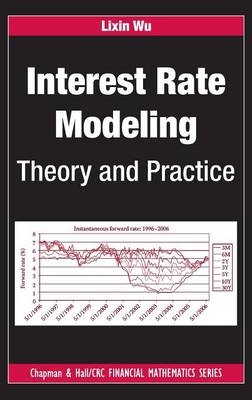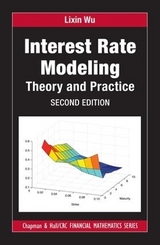
Interest Rate Modeling
Chapman & Hall/CRC (Verlag)
978-1-4200-9056-7 (ISBN)
- Titel erscheint in neuer
- Artikel merken
Containing many results that are new or exist only in recent research articles, Interest Rate Modeling: Theory and Practice portrays the theory of interest rate modeling as a three-dimensional object of finance, mathematics, and computation. It introduces all models with financial-economical justifications, develops options along the martingale approach, and handles option evaluations with precise numerical methods.
The text begins with the mathematical foundations, including Ito’s calculus and the martingale representation theorem. It then introduces bonds and bond yields, followed by the Heath–Jarrow–Morton (HJM) model, which is the framework for no-arbitrage pricing models. The next chapter focuses on when the HJM model implies a Markovian short-rate model and discusses the construction and calibration of short-rate lattice models. In the chapter on the LIBOR market model, the author presents the simplest yet most robust formula for swaption pricing in the literature. He goes on to address model calibration, an important aspect of model applications in the markets; industrial issues; and the class of affine term structure models for interest rates.
Taking a top-down approach, Interest Rate Modeling provides readers with a clear picture of this important subject by not overwhelming them with too many specific models. The text captures the interdisciplinary nature of the field and shows readers what it takes to be a competent quant in today’s market.
This book can be adopted for instructional use. For this purpose, a solutions manual is available for qualifying instructors.
Lixin Wu is an associate professor at the Hong Kong University of Science and Technology. Best known in the financial engineering community for his work on market models, Dr. Wu co-developed the PDE model for soft barrier options and the finite-state Markov model for credit contagion.
The Basics of Stochastic Calculus
Brownian Motion
Stochastic Integrals
Stochastic Differentials and Ito’s Lemma
Multi-Factor Extensions
Martingales
The Martingale Representation Theorem
Changing Measures with Binomial Models
Change of Measures under Brownian Filtration
The Martingale Representation Theorem
A Complete Market with Two Securities
Replicating and Pricing of Contingent Claims
Multi-Factor Extensions
A Complete Market with Multiple Securities
The Black–Scholes Formula
Notes
Interest Rates and Bonds
Interest Rates and Fixed-Income Instruments
Yields
Zero-Coupon Bonds and Zero-Coupon Yields
Forward Rates and Forward-Rate Agreements
Yield-Based Bond Risk Management
The Heath–Jarrow–Morton Model
Lognormal Model: The Starting Point
The HJM Model
Special Cases of the HJM Model
Estimating the HJM Model from Yield Data
A Case Study with a Two-Factor Model
Monte Carlo Implementations
Forward Prices
Forward Measure
Black’s Formula for Call and Put Options
Numeraires and Changes of Measure
Notes
Short-Rate Models and Lattice Implementation
From Short-Rate Models to Forward-Rate Models
General Markovian Models
Binomial Trees of Interest Rates
A General Tree-Building Procedure
The LIBOR Market Model
LIBOR Market Instruments
The LIBOR Market Model
Pricing of Caps and Floors
Pricing of Swaptions
Specifications of the LIBOR Market Model
Monte Carlo Simulation Method
Calibration of LIBOR Market Model
Implied Cap and Caplet Volatilities
Calibrating the LIBOR Market Model to Caps
Calibration to Caps, Swaptions, and Input Correlations
Calibration Methodologies
Sensitivity with Respect to the Input Prices
Notes
Volatility and Correlation Adjustments
Adjustment due to Correlations
Adjustment due to Convexity
Timing Adjustment
Quanto Derivatives
Notes
Affine Term Structure Models
An Exposition with One-Factor Models
Analytical Solution of Riccarti Equations
Pricing Options on Coupon Bonds
Distributional Properties of Square-Root Processes
Multi-Factor Models
Swaption Pricing under ATSMs
Notes
References
Index
| Erscheint lt. Verlag | 14.5.2009 |
|---|---|
| Reihe/Serie | Chapman & Hall/CRC Financial Mathematics Series |
| Zusatzinfo | 864 Equations; 19 Tables, black and white; 65 Illustrations, black and white |
| Sprache | englisch |
| Maße | 156 x 234 mm |
| Gewicht | 635 g |
| Themenwelt | Wirtschaft ► Betriebswirtschaft / Management ► Finanzierung |
| ISBN-10 | 1-4200-9056-9 / 1420090569 |
| ISBN-13 | 978-1-4200-9056-7 / 9781420090567 |
| Zustand | Neuware |
| Informationen gemäß Produktsicherheitsverordnung (GPSR) | |
| Haben Sie eine Frage zum Produkt? |
aus dem Bereich



